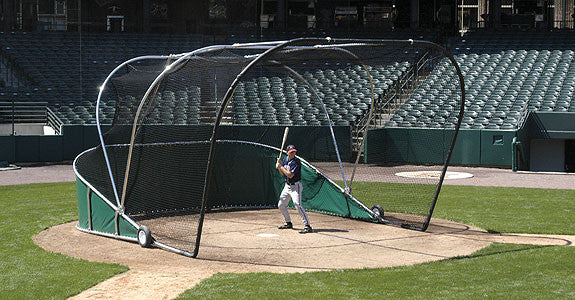Coaches- let's discuss foul balls around home plate. Let me start off with the situation story that happened a few nights ago the local softball park with a 12-year-old coach. the story ends with him eventually getting ejected because he didn't know the rule and would let up.
The batter hit a ball correctly and home plate, this happened twice during the game, and it went out toward the pitcher. The coach just would not believe that the umpire to the rules he said any ball that hit home plate is automatically foul. of course is not home plate is in fair territory and as long as a done touch the batter before they leave the batter's box and it's a fair ball.
let's discuss is just a little bit more so we don't have this problem over again. a fair or foul ball is determined when it is touched. it can easily get into fair territory and go file or it and found territory and go fair what determines that fair or foul is where it passes 1st or 2nd base or where it's touched. it has nothing to do with the box and home plate it's where it's touched that's the key.
In this particular case the coach simply didn't know the rule, and got himself and parents upset over this lack of knowledge.
when you approach is umpire, don't argue safe/out ball/strike that's a losing proposition what you should ask what you should question is rule. when you approach umpire tell him what rule your disagreeing with, then you have a chance to get it changed. Safe/out ball/strike our judgments and are not going to be changed.
Hope this helps and keeps the game moving smoothly and nobody ejected or upset.
umpire for over 50 years.=== Arnald Swift
BATCO is please to let everyone know that Coach Arnald Swift was inducted into the Colorado BB Coach Hall of Fame for is outstanding coach career and long umpiring career at all levels. Still working with youth games to this day.
Coach Arnald Swift shown in at a field in Evergreen CO in 2008.
in 2008.
As we get into the middle the summer many of us are umpiring tournaments in the final season games before we move into our high school seasons.
Had this unusual situation occur on the field just the other day and wanted to know how you think it should have been called by the umpire.
=====================================
a runner was rounding third base looking back inside to see where the ball was and he ran into the third baseman that had moved all the way to file territory almost in the coaches box. This runner ran into the third baseman did not have the ball fell down ( was asked the injured a little) but after he had fallen to the ground the third baseman receive the ball and take him out. The coach wanted obstruction and to even allow him to score-- the other coach said it was the runners responsibility to know the was going and ran into the third baseman on purpose hoping that there would be a bad throw. What would you rule go to the chatline and give me your answer.
=============================
The umpire ruled as I believe to be correct that it was not obstruction the runner was so far how the baseline running into a player that was clearly away from the bag that it became neither interference nor obstruction just to play that got the runner tagged out. It's unfortunate that he got slightly injured but the third baseman was not in the wrong place he was trying to avoid the runner so no obstruction and the runner did not create interference because there is no interference to involved as a result throw. So no obstruction and no interference we have just the play of the runner getting tagged out at third.
Umpire Arnald Swift
what happens when a pitcher steps off the rubber backwards?????
Coach's players fans all question umpires strike zone- but let me ask you what is the strike zone.
First let's talk about the width of the strike zone the plate itself is 17 inch across and a BB has a diameter of three and half inches and softball is a diameter of 5 inches. So now the question is does the ball have to be completely over the white 17 inches or can it be just touching thought white to be considered over it and a strike. If that's true were really expanding the strike zone anywhere from 3 inches to 4 inches depending on the game or playing. Most umpires believe it just has to touch the white and it's my personal belief that players, coaches and fans like to see that it keeps people swinging let's pictures throw better and keeps the game more interesting.
But what do you think????
When is a catch -- a catch and when is a catch a bobble
Let's revisit drop third strike. Once again I watched ballgames have umpire ballgames that this gets to be an issue. First a drop third strike is any third strike that's called or swung at that strikes the ground before goes into the catchers glove or falls out of the catchers glove and goes to the ground, not being held securely from the pitch or from the swing.
Now that we've defined that when can you run you can run on third strike meets the definition above any time for spaces open. But here's where the confusion comes if first space is occupied with less than two outs (0 or 1) then the batters out automatically even if he attempts to run deficient not play he cannot advance in the runners can only advance at their own risk. Now here's where the confusion comes in with two outs in the same exact play occurring the batter can run even with first base occupied. Now normally the catcher would just simply throw to the first baseman and the batter would be declared out but we need to keep in mind that all the force rules are still in play. The one that we see most of the time is bases-loaded missed/dropped third strike catchers picks it up and touches home plate which is legal and the runner coming from third base is the one that's declared out.
We got into this discussion just the other day when one of the parents said they couldn't run with the runner at first base because the play before with less than two outs the umpire declared the batter out then sure enough with two outs the batter struck out again with the catcher dropping the ball and they allowed him to run to first with no throw because coaches didn't know the rule and everybody was safe. In the course the coaches one complain that he was out a minute ago and now you changed your ruling and now I safe of course that's not true the difference is one time was with less than two outs. The other time was with two outs.
We need to add to this a little bit, if a catcher does not touch the batter and the batter leaves the batters box and no play is made the runner could be told to run and go directly from where he stands to first base. This is a very valid rule in high school, college, Pro now when you what's major-league ball on TV you see this occur you see the catcher facing the batter in the batter is walking away that's considered a play in the runner has given up and become out but the catcher must acknowledge the runner and the runner must either start to first base or if he gives up he declared out. There's no such thing as leaving a box and being automatically out or leaving the baseline and being automatically out.
Umpire Arnald Swift
Lets look at this play from 2 directions.
1. Rule it is a foul tip if the ball goes directly from the bat to the catchers glove or hand.
Now what if it misses the glove/hand and comes off his chest protector or mask. It is not a catch only a strike and is ruled a foul ball.
What if it hits his glove then to chest protector/mask and back to his glove it is a catch and shall be ruled a foul tip.
Here is the rule out of the book:
(2) A third strike is legally caught by the catcher;
Rule 5.09(a)(2) Comment (Rule 6.05(b) Comment): “Legally caught” means in the catcher’s glove before the ball touches the ground. It is not legal if the ball lodges in his clothing or paraphernalia; or if it touches the umpire and is caught by the catcher on the rebound.
If a foul tip first strikes the catcher’s glove and then goes on through and is caught by both hands against his body or protector, before the ball touches the ground, it is a strike, and if third strike, batter is out. If smothered against his body or protector, it is a catch provided the ball struck the catcher’s glove or hand first.
This is not really a rule but more of a discussion and I thought question that I experienced a couple weekends ago. This would apply to any level but especially the youth baseball and softball.
As normal with these kind of games the parents are quite intense and certainly don't see things the way they really were, or as the umpire sees them. And of course the umpire has to make the decision in a split 2nd and trying to get it right. When it's close is always going to be somebody that thinks it was the other way around. Obviously 99.9% of the time player that was affected negatively.
Now the discussion part normally the umpire would just have to take the parents verbal conversation and/or abuse or they would have to toss the parent out very very poor choice by the way, or go to management and get the parent compound or removed.
I become aware that several organizations Triple Crown, USAAA, youth baseball and softball plus I'm sure other organizations have taken another tactic in getting this particular problem handled. This is what I saw at the ballgame and actually after 40+ years of umpiring is the 1st time I've seen this but I believe it to be effective and a good approach that kind takes care of it but at the same time defuses it before it gets out of hand. On this never going to work every time nothing ever does the tell me what you think now that this is becoming more normal.
==========================================
The parent gets on the umpire for call and just won't let up, so he/she turns the fan and as calmly as possible indicates they need to stop. 99/100 times this won't stop but now the umpire has at least indicated they have a choice. The next as I find different and actually encouraging he calls the coach out of the dugout and tells the coach you need to talk to that parent and have them quit otherwise the consequences are going to be you as the coach and the parent are going to be removed from the field and the stands. When I saw this in action for the 1st time I was truly amazed it stopped things completely and we went on with the ballgame. I grant you neither the coach nor the parent were probably happy but the situation was handled the play stood, as it always will, and the parent was quiet. I'm sure the fear of being removed and the coach being removed her big and I'm sure the coach didn't want to be removed for what is parent was doing. I suspect there's this further consequences whatever play out to the coach being ejected, the parent being told to leave, and anything would happen after that during the game or even after the game is being confronted but I really thought it worked.
What would be your thoughts and comments may be your youth are playing and you will see this or even that you will think about it as an alternative to your actions or the parents around you. Your opinion please.
Arnald Swift the umpire
drop 3rd strike and what to do and when to do it










 in 2008.
in 2008.